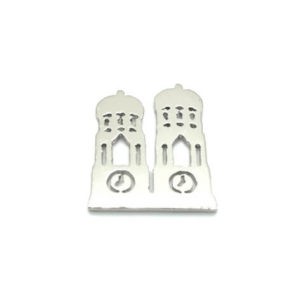 The Frauenkirche is located in the centre of Munich, not far from Marienplatz. It is the city's most famous landmark and has been the cathedral church of the Bishop of Munich and Freising since 1821. It got its name from its patron saint, the Blessed Virgin Mary.
The Frauenkirche is located in the centre of Munich, not far from Marienplatz. It is the city's most famous landmark and has been the cathedral church of the Bishop of Munich and Freising since 1821. It got its name from its patron saint, the Blessed Virgin Mary.
The Frauendom is 109 metres long, 40 metres wide and 37 metres high and is characterised by a simplicity inside that makes the building appear particularly imposing. The cathedral parish is the smallest in the city of Munich. Due to the depopulation of the city centre, only just over 300 Catholics live in the parish area.
Frauenkirche Munich and its history
In 1271, the small church Zu Unserer Lieben Frau was built by Bishop Konrad II and the women's parish was founded. When the population of Munich grew explosively around the 15th century, the existing church was no longer sufficient and Jörg von Halspach, the master builder of the Old Town Hall, was commissioned to erect an appropriate new building.
In 1468, the foundation stone for the Frauenkirche was laid. Two memorial plaques at the south-east portal still commemorate this day. In just 20 years, the brick building for 20,000 people was completed, although Munich only had around 13,000 inhabitants in the 15th century. The spires were still missing. In order to defend the city, the towers without spires were used as cannon emplacements during the Landshut War of Succession. In 1525, the characteristic Welsch spires, modelled on the Dome of the Rock in Jerusalem, were finally planned and added. Welsch was an expression for strange at the time, which is where the term Kauderwelsch comes from.
Air raids during the Second World War damaged the Dom heavily. It partially collapsed and most of the furnishings fell victim to looting. In the post-war years, Munich's landmark was gradually rebuilt. The last comprehensive renovation was carried out between 1989 and 1994.
Towers characterise the cityscape
The towers of the Frauenkirche in particular are considered the ultimate landmark of the city. They are visible from afar and the symbol of Munich.. The 98.45 metre high south tower is accessible to visitors and offers a wonderful view over the city. It contains seven large bells, which you can see up close as you climb up. In the 98.57 metre high north tower there are three more bells and also the medieval treadwheel, which was used 500 years ago to transport building materials to the top. In order to protect the towers as a landmark of the city, a referendum was held in 2004. This decided that no more buildings taller than 100 metres could be erected within the Mittlerer Ring.
The devil's footstep and its legend
In the entrance area of the main portal, the imprint of a human foot with a spur on the heel can be found on the floor. The following legend has been told about this footprint since the 17th century. When the Frauendom was finished but not yet consecrated, the devil sneaked in to take a look at the building. He stood in the place where the footprint still stands today. He couldn't see any windows from here as they covered the pillars. The devil was so pleased that he stomped on the ground and left his footprint. When he took a step further and saw the windows, he turned into a storm with rage and wanted to bring the church down. However, the devil did not succeed and since then there has always been a slight breeze around the Frauenkirche...